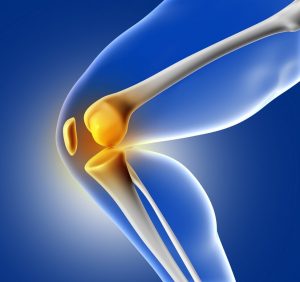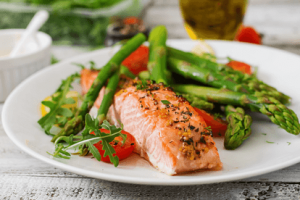Dietetics refers to a thorough study of the food we eat and its effects on our bodies. It is said and generally believed that arthritis or progressive inflammation of the joints, can only be managed and not cured. So if you have been diagnosed with arthritis, well, you have to live with it!
Now that arthritis is nothing but inflammation of the joints, increasing acceptance is lately being offered to the proposal that says- anti inflammatory foods might help reduce if not counter inflammation exactly as we see in other inflammatory disorders like polycystic ovarian syndrome. 
And it goes without saying that an arthritis diet is not a substitute to the medicines or to the exercises that you are prescribed for effective management of arthritis but just plays a small yet significant role in reducing the inflammation and therefore ease some associated symptoms that are otherwise difficult to deal with.
Let’s take a quick view of the foods for arthritis, suggested by a team of researchers who published their work in ‘Best Practice And Research Clinical Rheumatology’ in 2008.
1. Check your Vitamins: Vitamin C and Vitamin E
While vitamins are an essential part of your diet forming a major chunk of the micronutrients, the water soluble Vitamin C and the fat soluble Vitamin E are what have been found to reduce the rapidity with which arthritis progresses.
Vitamin C or Ascorbic acid slows down the rate of progression of osteoarthritis specifically whereas Vitamin E or Tocopherol reduces the intensity of pain that arthritis causes in joints.
Rich Dietary Sources of Vitamin C include-
Citrus fruits like oranges, lemon, kiwi etc
Broccoli
Pepper
Strawberries and
Amla
Rich dietary sources of Vitamin E include- 
● Wheat germ oil
● Sunflower, safflower, and soybean oil
● Sunflower seeds
● Almonds
● Peanuts, peanut butter
● Beet greens, collard greens, spinach
● Pumpkin
● Red bell pepper
● Asparagus
● Mango
● Avocado
Recommended Amounts For Vitamin C
The Recommended Dietary Allowance for adult men is 90 mg daily and for adult women, the same is 75 mg daily
Recommended Amounts For Vitamin E
The Recommended Dietary Allowance for vitamin E for males and females falling in the age group above 14 years is 15 mg daily.
2. Incorporating Copper and Zinc
Copper and Zinc being trace elements, are required in very less amounts in diet and therefore gets neglected even when we are otherwise cautious of including all nutrients in our diet.
Some studies have established that both Copper and Zinc are essential elements when it comes to the health and strength of our connective tissues. Connective tissues support and provide structure to other tissues of our body and more importantly serve to repair the damaged tissues- something that happens in arthritis to our joints.
The Dietary sources of Copper Include-
● Beef liver
● Oysters, crab
● Salmon
● Dark unsweetened chocolate
● Cashews
● Sunflower, sesame seeds
● Chickpeas
● Millet
● Whole wheat pasta
● Potatoes
● Spinach
The dietary sources of Zinc include-
● Shellfish: oysters, crab, lobster
● Beef
● Poultry
● Pork
● Legumes
● Nuts, seeds
● Whole grains
● Fortified breakfast cereals
Recommended Amounts of Copper
The Recommended Dietary Allowance for adults is 900 micrograms daily for both men and women
Recommended Amounts of Zinc
The Recommended Dietary Allowance (RDA) for adults is 11 mg a day for men and 8 mg for women.
3. Fish Fills You Up with Essential Fatty Acids
Oil rich fish such as Salmon, Tuna and Sardines have proved themselves to be one of the best sources of essential fatty acids and researchers suggest taking two portions of fish in a week’s time for at least three months. However, there’s an exception here.  Some people are allergic to fish and there are some who suffer from a variant of Rheumatoid arthritis which is absolutely intolerant to fish. In both these cases, fish must be avoided at all costs.
Some people are allergic to fish and there are some who suffer from a variant of Rheumatoid arthritis which is absolutely intolerant to fish. In both these cases, fish must be avoided at all costs.
4. Detoxify With A Mediterranean Diet
A Mediterranean diet is one that stocks you up on fresh fruits and vegetables. There’s some fish and dairy too and rarely, small amounts of red meat. Research in this field has verified that this diet is the best solution for the stiffness of joints and muscles which is a hallmark of many types of arthritis.
5. Cutting Down on Purines
Most of the time the culprits include mushrooms, chickpeas, besan and green leafy vegetables. And we’re asking you to reduce and not stop them altogether because they have their own benefits too! Purines have been found to aggravate Gout- a type of arthritis that is characterized by a sharp rise in the levels of uric acid as a consequence of disequilibrium between the intake and excretion of purines.
High-Purine Foods Include:
● Alcoholic beverages (all types)
● Some fish, seafood and shellfish, including anchovies, sardines, herring, mussels, codfish, scallops, trout and haddock
● Some meats, such as bacon, turkey, veal, venison and organ meats like liver
Moderate Purine Foods Include:
● Meats, such as beef, chicken, duck, pork and ham
● Shellfish, such as crab, lobster, oysters and shrimp
There is little evidence to support the hypothesis that diet modifications can help manage arthritis. But then, swapping less healthy foods with healthier choices switching is very much mindful living. And well, mindful ‘anything’ is never a harm!
Also Read:
List of the Best Sources of Protein for Vegetarians
Health Benefits of Walnuts that might surprise you!
